My nine-to-five is with the Social Innovation STL. I am a Community Organizer, so everything I do is based around that. Some of the ways I am connected with Forward Through Ferguson is through my job with the Social Innovation District, but it really started before that as a Community Organizer. The Social Innovation District was ignited by Wyman. Wyman is our fiscal sponsor, and they wanted to support the work of the Social Innovation District because our job is to help strengthen non-profit organizations. Wyman wanted to ensure that their partners were stronger, but they did not feel like it was their role to strengthen their partners. They really liked the idea of having an organization that could help do that work. So, they basically said, “Go create the table, and then invite us to the table.”
Our mission is to strengthen the social sector in St. Louis, which includes all of the mission, purpose-focused organizations throughout St. Louis who are doing great work. We focus on three levels:programs, organizational capacity, and partnerships. Among these three levels, the one I lead is organizational capacity. This is less about taking one organization at a time and trying to build their capacity as it is about finding regional strategies to build all of our capacities. Baked in that is community organizing, and this is about organizing a different type of community. It is about organizing organizations, particularly non-profits, and people who work within the social sector. I was excited to be able to use those tools, and it was a position that allowed me to push on my peers.
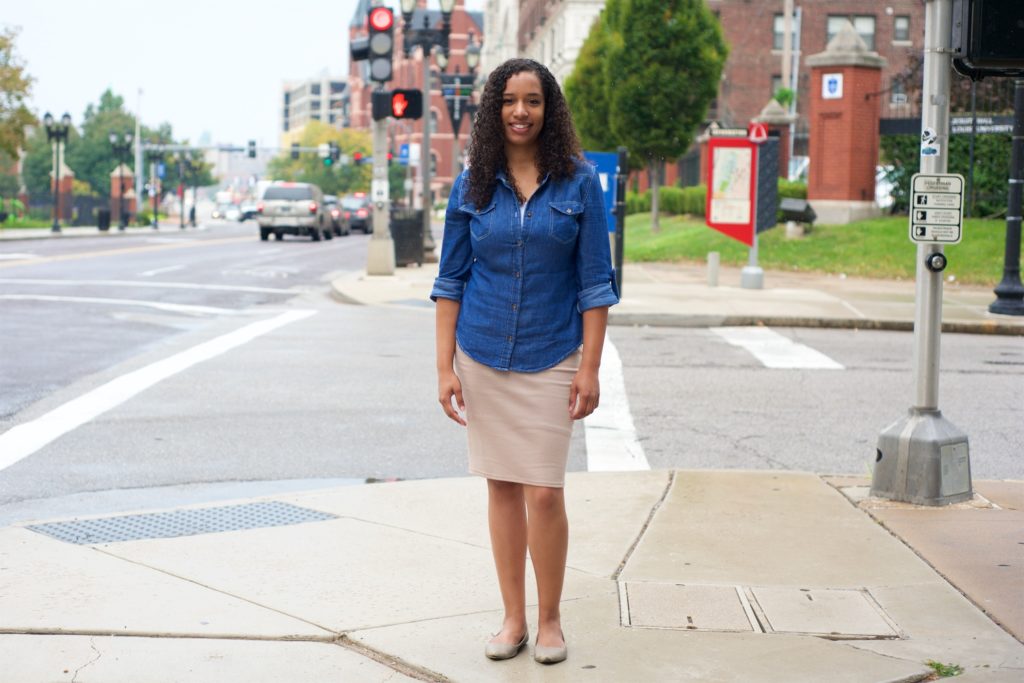
Jessica Wernli, photos by Lindy Drew
My first goal is to do a census of all community organizations throughout the region, not just your typical 501(c)3 organizations, but also smaller community-based organizations. Some of them do not have 501(c)3 status, but they are doing awesome work. How do we keep track of that so that then we can find out what it is they need? The first step is to uncover who is doing what in St Louis. The next step is to ask, “What do they need in order to be stronger?” I am also exploring some capacity-building tools, including a couple different types of assessments that organizations can take to help them get a better idea of what they need. At the heart of that, we are inserting a Racial Equity lens so that organizations can internally and externally look at how they are tackling it. When I am looking at capacity-building assessments that show an organization’s strengths and weaknesses, they do not mention race explicitly. If you want to assess how your organization is doing in regards to Racial Equity, there is an entirely different assessment for that. I have not found one that integrates the two, so we may be developing some tools that will be the first of its kind.
It is not just about how strong you are as an organization, but how connected you are to the community, and how you respond to race.
A lot of the assessments talk about cultural competencies, asking questions like, “When you are going into a community that you are not familiar with, how are you engaging with residents?” They are not as explicit about race though. That is why we are working with different diversity, equity, and inclusion partners so that they can help us integrate the right questions. Our hypothesis is that an organizational capacity assessment with a Racial Equity lens will actually yield more equitable results. When organizations are thinking about their strengths and areas of needed growth, while also centering on a Racial Equity lens, they should shift their focus to more equitable practices. You can be a strong organization, you can have a strong board, you can have a large budget, and still do harm to your community. It is not just about how strong you are as an organization, but how connected you are to the community, and how you respond to race.

We are doing a literature review of the national and local data, and conducting interviews with people to find out what types of capacity frameworks they are working out of. We are finding that everyone has their own thing going on. Capacity-building is happening, but it is happening in silos. Different funders are doing capacity-building with their grantees. They are still trying to figure it out so they are testing some things, but they are not talking to each other. Then, you have intermediaries whose purpose is to strengthen organizations and they have their groups they are working with. People are not coming together to talk about creating a shared language and a shared framework for capacity-building so that we can really lift up all these organizations together. Part of what we are finding is that it is happening, but it is happening in a segmented way, and it is not as strong as it could be. I want to see us really leverage our resources and strategize together about how we can do it together.
The other work that I am really excited about, I started a year before I came to Social Innovation District. Shortly after the Ferguson Commission report was completed, Rev. Starsky Wilson had gathered some different organizations to talk about implementation, and he brought me in to help facilitate. One of the groups he convened was a group of grassroots community organizing and activist organizations who had already been pushing important policies. There were a lot of things in the report that they were already working on, such as policing, court reforms, and school discipline. He convened that group so they could talk about what it would look like to come together to continue to fight for the work that was in the report and to hold stakeholders accountable.
White-led non-profits need to think through the implications of going into communities of color.
The first thing we did was a part of the Beloved Community Conference that was held at Saint John’s Church last year. The Conference ended with a public action meeting at St. Louis University, where we invited superintendents, police chiefs, and the mayor to talk about how they were going to be held accountable to the report. We got some superintendents to talk about discipline reform and how they were going to seek alternatives to suspensions and expulsions in their schools. We got a commitment from key local business leaders to create a Racial Equity fund that has been started so that they could provide funding for using the Racial Equity lens throughout the region.
We invited police chiefs to talk about the reforms in their departments. We had a couple of people who did not show up, like Chief Dotson and Mayor Slay. Consequently, the next day, we went to Mayor Slay’s office and held an action expressing our concern for his lack of accountability. He took a meeting with us on-site to talk about some of the reforms that we needed to see. Although there is a long way we need to go with him, we continue to fight to hold those public officials accountable, and we are working together as different grassroots organizations in the region to make sure that that happens. A lot that was in the report are things that the powers that be need to put in place. Some of it includes things that we can do as organizations and as community members, but some of it is placed in the hands and the laps of our legislators and our policymakers. We need to be pushing them to get it done.
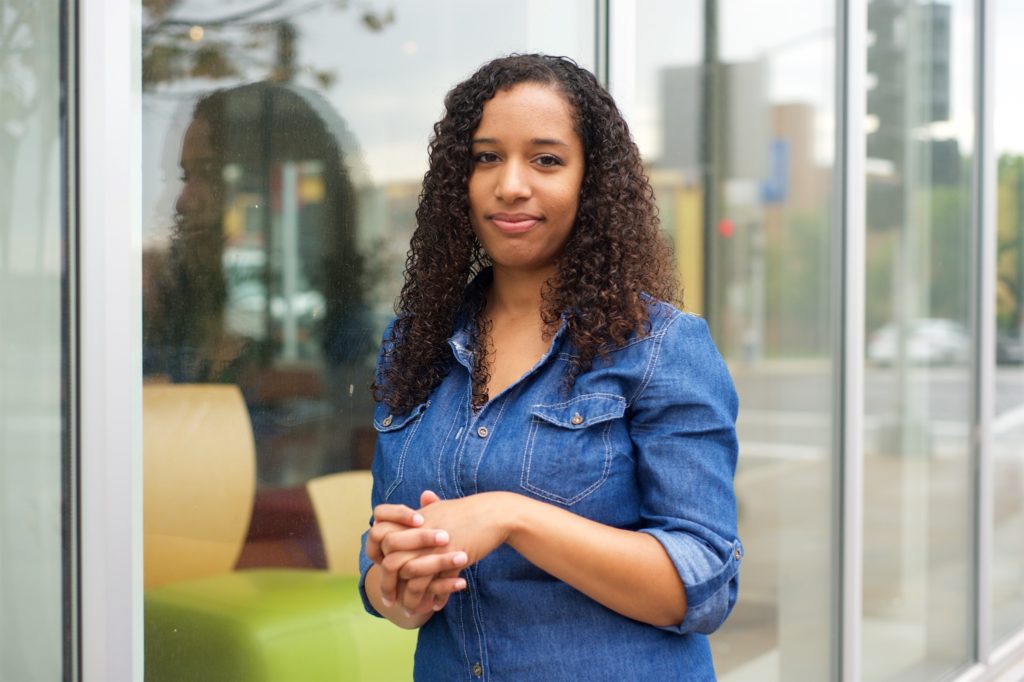
Wyman is beginning to coordinate a new project in the Normandy Schools Collaborative to bring in their partners and coordinate wrap-around services and supports for students. Wyman partnered with Beyond Housing to explore what a more coordinated partnership could look like. I plan to push the organizations involved to incorporate a Racial Equity lens at the center of this project because Racial Equity is such an important conversation to have within the social sector. Many of these organizations have White leadership and work in communities of color. And when you are not thinking about race, that setup can be really harmful. My background is in social work, so I feel like it is my role to challenge fellow social workers so that we can be more impactful and more accountable. White-led non-profits need to think through the implications of going into communities of color.
For example, there is a growing number of youth-focused organizations beginning to address trauma. They need to be challenged to place race at the center of this discussion because trauma can look different in communities of color, and it may need to be addressed in different ways. Consider the generational trauma that comes with being a Black person in this country who is constantly struggling within systems that have been set up to oppress them. How are we taking that into account when working with people of color? I see my role as challenging organizations to think more on that level. If we don’t, it looks like a bunch of people from social services coming in and saying, “We want to help fix you.” When you are not looking at the context in which these kids and their families are living, and you are not trying to change that, you are going to continue to have children with this trauma because you are not dealing with its root cause.
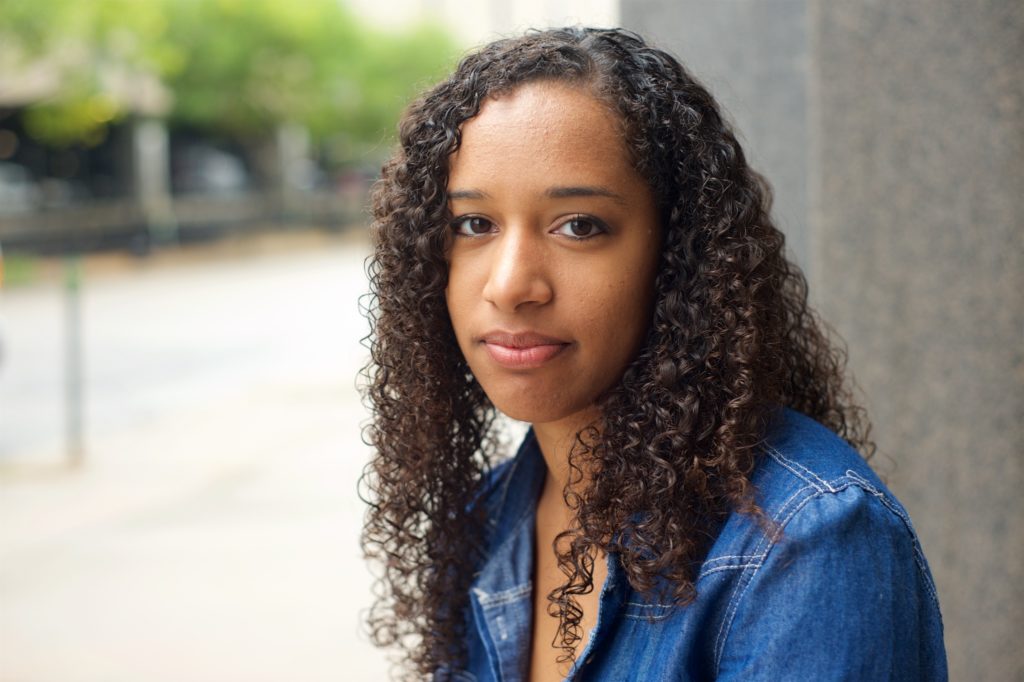
My very first experience in organizing, before I really knew what it was, was in college. Our university sent out letters to all of the Greek organizations telling them that they were going to discontinue them because the numbers had been low for a couple of years. On my campus, all of the sororities and fraternities were Black and one was Hispanic. So what it felt like for us was, ‘We are going to take away this outlet that exists for minority students, for Black students in particular, without putting anything else in place.’ I did not pledge into a sorority, but a lot of my friends were a part of those organizations, and it was central to black student life on our campus. I represented an organization that advocated for students, so I met with the Dean to ask, “If you do this, what are you going to put in its place to support Black students?” They had nothing.
This was happening at a time when our retention of Black students was going down, as it was apparent that our university was not responding to their needs. Many would come in as Freshmen and leave by their Sophomore year and that was the trend. So I organized a big sit-in for members of the Greek organizations, black students, and alumni to bring questions to the Dean and demand that she rescind the decision. She did, and now when I go back and visit my alma mater, there are people with letter jackets walking around everywhere. Their retention numbers went soaring after that. That is just a small way that we helped to support Black students on our campus. That was before I realized that I was organizing, but it had a lot of elements of organizing people to confront the powers that be.
One of the biggest hurdles in the work I do now is getting people to think in a broader scope. We have immediate fires that need to be put out and I understand we need to keep putting them out. We need to keep feeding kids every day, we need to keep making sure that they have clothing, that they have housing, and that we can provide immediate counseling needs. And we need to look at what is creating those situations in the first place. One of the things that I keep butting up against is people’s lack of urgency around getting at the root causes of these issues. Just the term “social services” connotes providing services to people who need them right now. It is not about looking at why people need the services.
So I try to spend a lot of my time thinking about how to communicate that gap in understanding. How can we communicate the importance of focusing on root causes and how it directly relates to the work that non-profits are doing on the ground? How do we make that connection between you feeding kids, and us needing to change a policy? When we are providing services to kids in schools, we need to ask ourselves, “Why is there a school district that serves mostly Black students and those Black students are failing?” We need to look at why our schools are segregated and why resources are allocated inequitably while we are also trying to make up for those gaps.
I do not want for my job to start and end with providing a meal so people can get through this day so that they can stay just comfortable enough. I want us to push to change the way things are.
When I was in graduate school, there was a quote from one of our textbooks that really stuck with me. Essentially, it said that social workers help people to be comfortable enough in their situation that they stay in that situation. I do not want that to be true. I do not want for my job to start and end with providing a meal so people can get through this day so that they can stay just comfortable enough. I want us to push to change the way things are.
I am originally from Aurora, Illinois, outside of Chicago. I came here to work for United Congregations at Metro East (UCM) in Illinois to work on social justice issues. The first couple years I was here, I kept thinking, “This is temporary. I am eventually going to go back to Chicago, or go to D.C.” I wanted to go to a bigger city, but I really grew to love the St. Louis area. I place my focus regionally in part because I moved to St. Louis, but I worked on the Illinois side. So, every day when I crossed that bridge I was reminded of how connected we all are. I want to impact not just St. Louis, but the entire region. I want to stay and see through the work that I started. Long-term work.
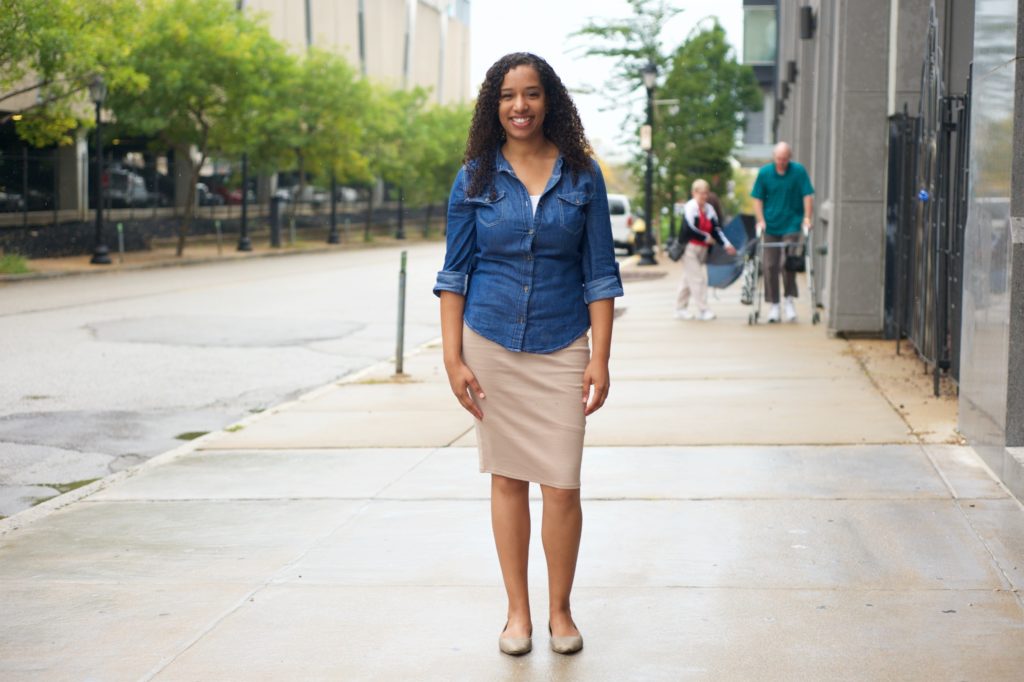
What got started in Ferguson is a movement. That is long-term work that I want to see through. I want to see the recommendations in the Ferguson Commission report become reality, and that is also long-term work. I want to be here to see it through to the end. I also do a lot of work in East St. Louis, including helping to get the new mayor in office. I work closely with her, and that is at least a four-year term that I want to be here for. I think we do have people who start here and then they grow and they are needed other places. That is great. But, it is so important for some of us who have started here to see it to the end and to have that continuity.
The first time I read the Ferguson Commission’s report was around the anniversary of Mike Brown’s death. I remember clicking through it and reading it and looking at the stories. I thought it was really well put together and they personalized it, which is important. At that time, I was working for UCM in Illinois, and I was surprised and excited that people over there were actually looking at the report. I thought we were going to have to push for them to do that. There was still some pushing that was needed, but people got to work. In Alton, Illinois, a committee was created to look at some of their policing issues, and they have used the report as a guide, which surprised me a little bit because a lot of the communities in Illinois were trying to separate themselves from what was happening in Ferguson. Yet, when it came to presenting some solutions, they were still open to those solutions.
“Racial Equity lens” and “DEI — diversity, equity, and inclusion.” We use those terms, but do we all understand what they mean?
We need to come together around a shared narrative. There is an underlying and shared narrative about race. And the language that some of us are using needs to not be so internal. When I am with certain groups, I find myself using terms like “Racial Equity lens” and “DEI – diversity, equity, and inclusion.” We use those terms, but do we all understand what they mean? Then, you go outside of that group and other people are not getting it. So we need to make sure that we are educating people and not getting stuck on internal lingo.
I know that Forward Through Ferguson is talking with diversity, equity, and inclusion groups about how we have a far reach, and how we educate the region so that we are understanding and learning together. As we tackle the problem, we need to make sure that people are actually understanding the problem. I keep running into people who just have a misunderstanding about the work that we are doing. They are hearing a counter-narrative from other groups. It seems like we have done so much already, but there is always more.
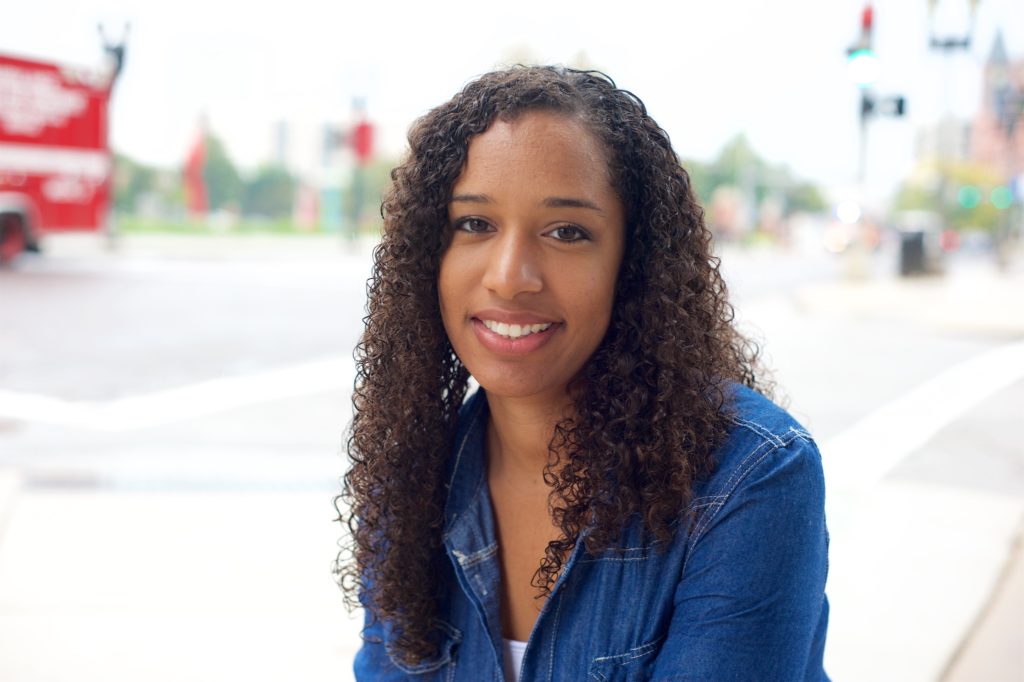
Forward Through Ferguson’s definition of Racial Equity is, “Ensuring that outcomes are not determined by race.” That is what the Social Innovation District uses, too. That comes pretty close to how I would personally define Racial Equity. This has been seen through the stark inequities that have been outlined in the For Sake of All report, including shorter lifespans for communities of color in our region. It is helpful to be able to pull from these facts and reports that are already out there. They are published, the work has been done, so you can refer to it and say, “Here is where we are at.”
To better understand equity, think about starting further behind in a race. People of color have not only started farther back since we were born. We have started generations behind our White counterparts. It is not like just going through class and the teacher calls on you more than me, and pays more attention to you than me. It’s deeper than that. Our families, going back generations, have not had the same opportunities to accumulate wealth in the same way that other families have. We have not had access to quality education in the way other families have. It can get overly-complicated sometimes when we are talking about all the systems at play and how they are intertwined. People can get lost in that. But, what will make this real for people are the stories and those analogies and just literally painting that picture for them.
-Jessica Wernli, Social Innovation STL Program Manager

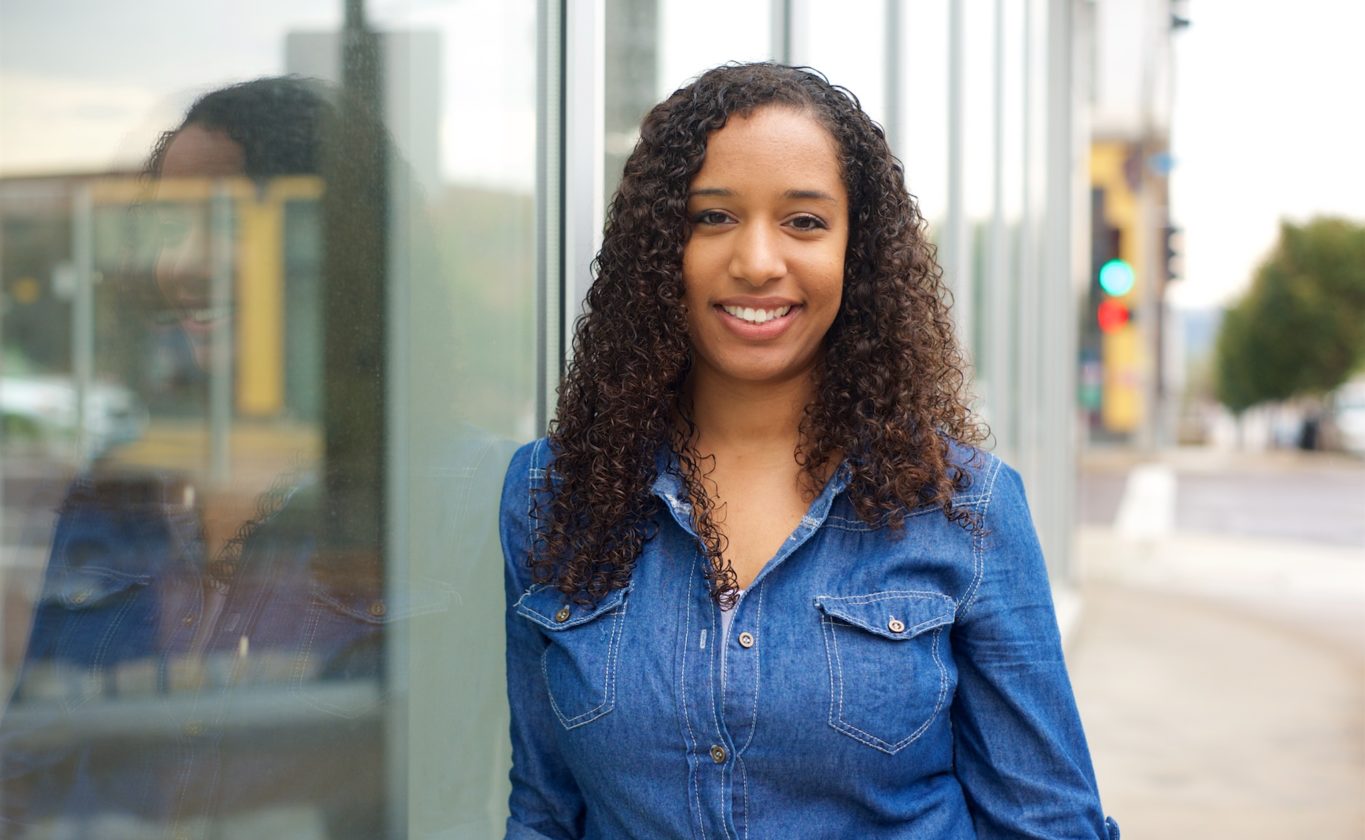
#FwdThruFerguson